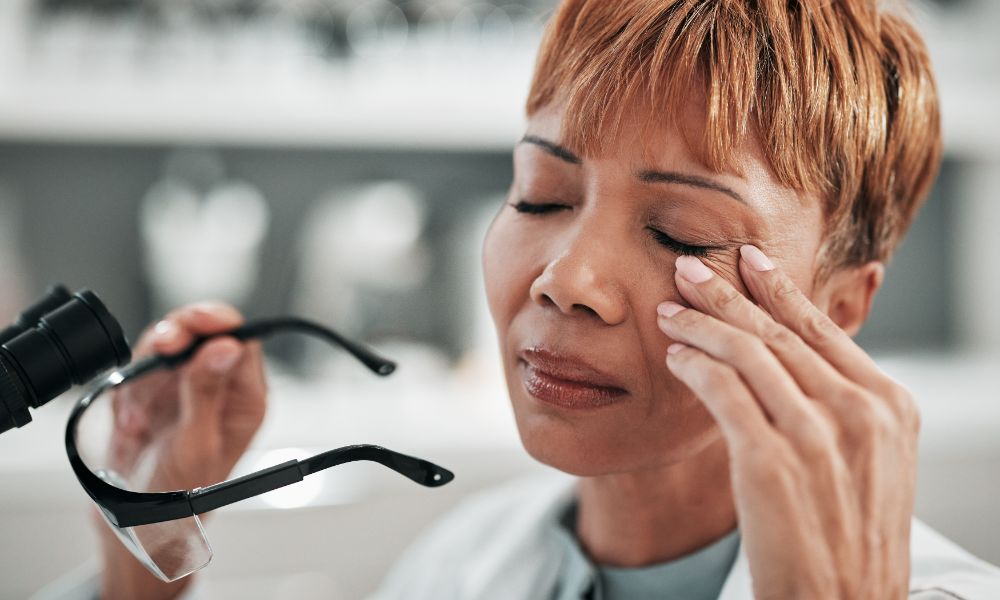Imagine trying to read a restaurant menu in dim lighting, or struggling to recognize a friend waving from across the street. These seemingly small inconveniences are daily realities for millions grappling with poor vision. According to recent statistics, a significant portion of the population experiences some form of visual impairment, impacting everything from their ability to drive safely to their capacity to enjoy leisure activities. Poor vision isn’t just about needing glasses; it encompasses a wide range of conditions like nearsightedness, farsightedness, astigmatism, and more complex issues. These conditions can significantly diminish quality of life, affecting both physical and emotional well-being. That’s why understanding the impact of poor vision and knowing the available solutions is crucial. This blog aims to illuminate the challenges of living with impaired eyesight and provide practical, actionable advice to mitigate these effects. We’ll explore common vision problems, discuss effective treatments, and emphasize the importance of regular eye exams with a qualified optometrist. Let’s delve into how you can take control of your eye health and improve your daily life.
The Daily Impact of Poor Vision
A. Challenges in Everyday Tasks
Driving:
Blurred vision makes reading road signs and judging distances difficult, especially at night, increasing the risk of accidents.
Reading and Writing:
Eye strain and headaches are common, making it hard to focus and leading to skipped lines or misreading.
Computer Work:
Digital eye strain, blurred vision, and fatigue are prevalent, reducing productivity and causing discomfort.
Household Chores:
Detailed tasks like sewing or repairing small items become challenging, and there’s an increased risk of accidents due to misjudging distances.
Sports and Recreation:
Impaired depth perception and reduced hand-eye coordination can hinder performance and enjoyment.
B. Social and Emotional Effects
Poor vision can lead to reduced confidence and self-esteem, especially in social situations.
Difficulty participating in activities can result in social isolation.
The constant struggle with vision problems can increase anxiety and stress.
It can strain relationships when miscommunication occurs due to misreading body language or facial expressions.
C. Impact on Education and Employment
Children with undiagnosed vision problems may struggle with learning, affecting their academic performance.
Reduced productivity and job performance can hinder career advancement.
Certain career paths may be limited due to vision requirements.
Common Vision Problems Explained
A. Nearsightedness (Myopia)
Difficulty seeing distant objects clearly.
Caused by the eye focusing images in front of the retina.
Risk factors include genetics and excessive close-up work.
B. Farsightedness (Hyperopia)
Difficulty seeing close-up objects clearly.
Caused by the eye focusing images behind the retina.
Risk factors include genetics.
C. Astigmatism
Blurred vision at all distances due to an irregularly shaped cornea.
Can occur with nearsightedness or farsightedness.
Risk factors include genetics.
D. Presbyopia (Age-Related Farsightedness)
Gradual loss of ability to focus on close objects, typically starting in the 40s.
Caused by the lens of the eye becoming less flexible.
A natural aging process.
E. Other Vision Problems
Conditions like cataracts, glaucoma, macular degeneration, and diabetic retinopathy require professional medical attention from an ophthalmologist.
Solutions and Treatments
A. Corrective Lenses
Eyeglasses:
Various lens types, including single-vision, bifocals, and progressive lenses, with coatings to reduce glare and protect against UV rays.
Contact Lenses:
Soft, rigid gas-permeable, and specialty lenses, offering convenience and a wider field of vision.
B. Vision Therapy
Exercises and techniques to improve eye coordination, focus, and tracking.
Beneficial for conditions like amblyopia (lazy eye) and strabismus (crossed eyes).
C. Medical Treatments and Procedures
LASIK and other refractive surgeries:
Correct vision by reshaping the cornea.
Cataract surgery:
Removes the clouded lens and replaces it with an artificial lens.
Treatments for other eye diseases will vary depending on the specific disease.
D. Lifestyle Adjustments
Ensure proper lighting and ergonomic setup for work and reading.
Follow the 20-20-20 rule: every 20 minutes, look at something 20 feet away for 20 seconds.
Maintain a healthy diet rich in vitamins and antioxidants, and stay hydrated.
Use magnifying tools for reading small print.
Importance of Regular Eye Exams
A. Early Detection and Prevention
Regular check-ups can detect vision problems early, preventing them from worsening.
Recommended frequency varies based on age and risk factors.
B. What to Expect During an Eye Exam
Tests include visual acuity, refraction, eye pressure measurement, and examination of the retina.
Discuss any symptoms or concerns with your eye doctor.
C. Finding the Right Eye Care Professional
Choose an optometrist or ophthalmologist based on your specific needs and referrals.
Living with poor vision can create daily obstacles, affecting everything from simple tasks to your overall sense of well-being. However, you don’t have to navigate these challenges alone. Effective solutions and treatments are readily available, ranging from corrective lenses and vision therapy to advanced medical procedures. The key to maintaining and improving your vision lies in proactive care and regular professional evaluations. Prioritizing your eye health is not a luxury; it’s a necessity for a fulfilling life. Don’t let blurred vision or eye strain dictate your daily experiences. Take the first step towards clearer sight by scheduling a comprehensive eye exam with a qualified optometrist.
Remember, early detection and intervention are crucial. An optometrist can identify potential issues before they escalate, providing personalized recommendations and treatments tailored to your specific needs. From prescribing the right corrective lenses to diagnosing and managing eye diseases, an optometrist plays a vital role in safeguarding your vision.
Don’t wait for your vision to deteriorate further. Implement healthy lifestyle habits, such as following the 20-20-20 rule and maintaining a balanced diet. And most importantly, make regular appointments with your optometrist. Take control of your eye health today, and experience the world with clarity and confidence. Your vision is precious; invest in it.





